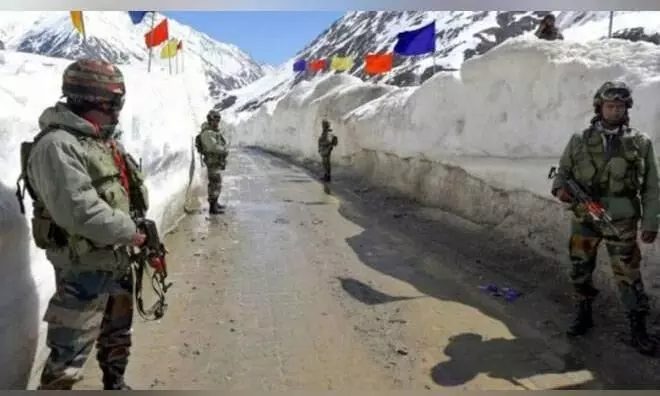
India and China to disengage troops in Ladakh’s Depsang and Demchok by month-end
text_fieldsIndian and Chinese troops are set to withdraw from the Depsang and Demchok regions in Ladakh, returning to positions held prior to April 2020, according to sources within the Indian Army.
The disengagement, expected to be complete by Tuesday, marks a significant de-escalation of the military tensions along the Line of Actual Control (LAC) that have strained relations between the two nations for over four years.
This week, both countries reached a new patrolling agreement specific to these contested regions.
Under this accord, troops will vacate temporary infrastructure, including makeshift sheds and tents. Ground commanders will also maintain regular communications, and each side will inform the other prior to any patrol to avoid misunderstandings. Surveillance will continue on both sides, ensuring the agreement is upheld while preventing miscommunication during patrols.
The recent agreement aims to ease the military and diplomatic tensions that arose after skirmishes in Pangong Lake in May 2020 and the deadly Galwan Valley clash in June, in which 20 Indian soldiers lost their lives. Following these confrontations, both countries significantly increased their troop presence along the LAC. By August last year, India had airlifted approximately 70,000 troops, dozens of tanks, and multiple combat vehicles to eastern Ladakh, along with Sukhoi and Jaguar fighter jets for rapid deployment. Similarly, China deployed a large contingent of soldiers along eastern Ladakh and the Northern Front.
Reflecting on the agreement, Army Chief General Upendra Dwivedi emphasized the need to rebuild trust between the two nations' armed forces. "Trust will be restored once both sides can observe each other and be reassured that buffer zones are being respected," he noted.
The patrolling agreement comes shortly before Prime Minister Narendra Modi’s visit to Russia for the BRICS summit, where he is scheduled to meet with China’s President Xi Jinping. During their discussions, Modi highlighted the importance of maintaining peace and stability along the border and stressed "mutual trust and respect" as essential values in their bilateral relationship.
External Affairs Minister S. Jaishankar also acknowledged the role of "patient and persevering diplomacy" in achieving this agreement, adding that it "lays the groundwork for restoring peace along the border, similar to the period before 2020."
While the new disengagement plan is a step forward, tensions remain in other areas, including Gogra-Hot Springs.
Intelligence reports suggest that China still occupies portions of Indian territory in the northern Depsang plains, a strategic location as it provides India with access to the Daulat Beg Oldie airstrip and secures logistics centers in the region. Demchok, divided by the LAC, also remains an area of strategic importance, with India controlling the western part claimed by China.























